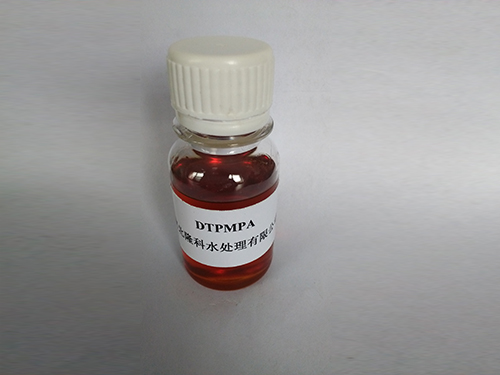Understanding the Role of Polyacrylamide in Scientific Applications and Research
The Significance of Polyacrylamide in Modern Applications
Polyacrylamide (PAM) is a synthetic polymer that has garnered significant attention across various industries due to its versatile properties and applications. Since its introduction in the early 1950s, polyacrylamide has become an essential material in fields ranging from agriculture to wastewater treatment, biotechnology, and even in the cosmetics industry. In this article, we will explore the unique characteristics of polyacrylamide, its various applications, and the future scope of this important polymer.
Chemical Composition and Properties
Polyacrylamide is composed of acrylamide monomers that polymerize to form long chains. The resulting compound can exist in several forms, including powders, gels, and solutions, depending on its molecular weight and degree of cross-linking. One of the standout features of polyacrylamide is its ability to absorb significant amounts of water, making it an excellent thickening agent. Its high viscosity and solubility in water further enhance its functionality in various applications.
Polyacrylamide can be produced in different grades, such as anionic, cationic, and non-ionic varieties. The choice of grade is crucial as it determines the polymer's behavior in different environments. For instance, anionic polyacrylamide is often used in soil conditioners, while cationic types are predominantly used in wastewater treatment for flocculation—a process that coagulates and removes suspended solids from water.
Applications in Agriculture
In agriculture, polyacrylamide has been used extensively as a soil conditioner and water retention agent. In arid and semi-arid regions, where water scarcity is a critical concern, the use of polyacrylamide can significantly enhance soil moisture retention. This not only improves crop yields but also reduces the frequency of irrigation, conserving water resources. Experimental studies have shown that the incorporation of polyacrylamide into soil can increase the absorption of water, thereby supporting sustainable agricultural practices.
Moreover, polyacrylamide helps in controlling soil erosion. By binding soil particles together, it forms a stable structure that can withstand heavy rainfall and wind, preventing topsoil loss. This property is vital for maintaining soil fertility, especially in agricultural lands that are prone to erosion.
Role in Water Treatment
One of the most critical applications of polyacrylamide is in wastewater treatment. The polymer's ability to flocculate enables it to bind suspended particles together, forming larger aggregates that can be easily removed from water. This process is essential for cleaning industrial effluents and municipal wastewater, thereby improving water quality before release into natural bodies.
polyacrylamide is a

Polyacrylamide is also employed in the oil and gas industry, where it is used for enhanced oil recovery (EOR). During the extraction process, polyacrylamide helps increase the viscosity of the injected water, improving the displacement of oil and maximizing yields. This property can lead to more efficient extraction methods, reducing waste and promoting sustainable energy practices.
Innovations in Biotechnology and Cosmetics
In biotechnology, polyacrylamide gels are widely used in electrophoresis, a technique for separating macromolecules like DNA and proteins. Its ability to create a stable and uniform gel matrix makes it invaluable in molecular biology research and diagnostics.
Furthermore, the cosmetic industry has embraced polyacrylamide as a key ingredient in numerous products. Its thickening and stabilizing properties make it an ideal choice for lotions, creams, and other formulations. The polymer helps in achieving the desired texture and consistency in these products, making them more appealing to consumers.
Future Prospects
The versatility of polyacrylamide positions it well for future innovations. As concerns over water scarcity and environmental sustainability grow, the demand for efficient water management solutions will likely increase. Polyacrylamide's role in soil enhancement and water treatment will be pivotal as industries look for ways to reduce their ecological footprints.
Moreover, advancements in polymer chemistry may lead to the development of biocompatible and biodegradable forms of polyacrylamide, expanding its use in healthcare and reducing environmental impact. Ongoing research in nanotechnology may also unlock new applications of polyacrylamide in drug delivery systems and tissue engineering.
Conclusion
In summary, polyacrylamide is an extraordinary material that plays a vital role in numerous applications today. Its unique properties not only enhance agricultural productivity and improve water quality but also contribute to advancements in biotechnology and cosmetics. As industries continue to seek more sustainable and efficient solutions, polyacrylamide is poised to play an even more significant role in our lives. Its importance in promoting environmental sustainability and improving daily conveniences cannot be overstated, making it a focus for future research and development.
-
LK-319 Special Scale And Corrosion Inhibitor For Steel Plants: Advanced Solutions for Industrial Water SystemsNewsAug.22,2025
-
Flocculant Water Treatment: Essential Chemical Solutions for Purification ProcessesNewsAug.22,2025
-
Isothiazolinones: Versatile Microbial Control Agents for Industrial and Consumer ApplicationsNewsAug.22,2025
-
Scale Inhibitor: Key Solutions for Water System Scale PreventionNewsAug.22,2025
-
Organophosphonates: Versatile Scale Inhibitors for Industrial Water SystemsNewsAug.22,2025
-
Scale and Corrosion Inhibitor: Essential Chemical Solutions for Water System MaintenanceNewsAug.22,2025





